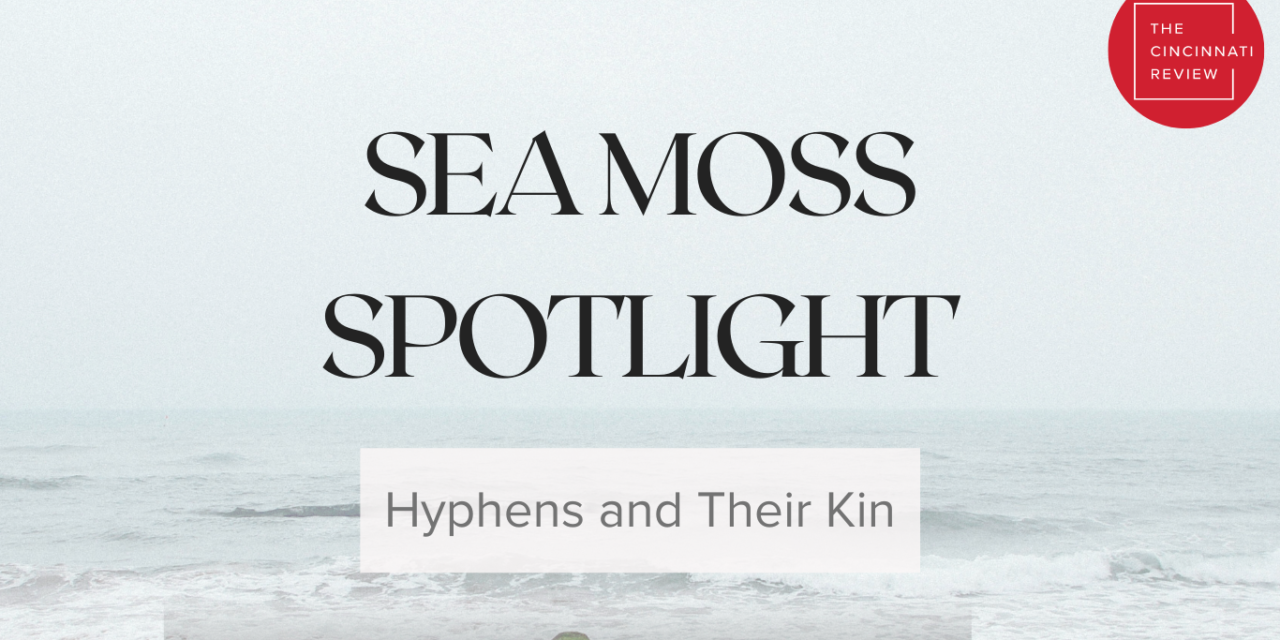
Assistant Editor Lily Davenport: We’ve just finished our proofreading season at the CR, which means we’ve all been spending a lot of quality time with our style guide, The Chicago Manual of Style (CMOS)—often and affectionately pronounced like this column’s title. While our managing editor, Lisa Ampleman, handles the copyediting (i.e., the heavy-duty editorial work that happens prior to an issue’s being typeset), we still have plenty of occasion to pull out the Manual during the cleanup that follows once proofs arrive. This is one of my favorite parts of working at the CR; I love the Manual, which is huge and unruly and possessed of a dry, understated sense of humor, and I admire its quixotic ambition to encompass every possible use case in written academic English. And, on the flip side, CMOS is also a useful entry point for thinking about the personal and political ramifications of our work as editors—like any ‘standardizing’ text, it was built by human beings with distinct backgrounds, perspectives, privileges, and biases, and some of that baggage inevitably got baked in along the way. I’m excited to highlight my favorite parts of the Manual here, along with the sections that continue to trouble me. Additionally, I learned while drafting this first installment of the column that the University of Chicago Press will launch the Manual’s long-awaited eighteenth edition this September—so, increasingly, this feels like a farewell tour or a piece of preemptive nostalgia.
Oh, and if you’re reading this and thinking “o woe! my submission used a hyphen incorrectly, and I am doomed to never grace the pages of the CR!” —don’t. We do not expect writers to also function as copyeditors; though they are both language-focused kinds of work, these are, in all other ways, two completely different jobs. Don’t ever let well-meaning relatives inquiring about your job search tell you otherwise!
Few marks of punctuation are more perplexing, to the CMOS newcomer, than the seemingly humble and straightforward hyphen. The Manual treats hyphenation as a matter of spelling, not one of punctuation, so the guidelines for using hyphens appear at the end of chapter seven, which also deals with plurals, possessives, the usage of “a” versus “an,” contractions, ligatures, italics, and appropriate breaks for words across typeset lines. While it can initially feel odd or frustrating that the hyphen is siloed off from the other punctuation marks, which CMOS discusses in chapter six (what did the hyphen do to deserve this isolation? does it harbor a contagious illness, like some typographic Typhoid Mary? did a pack of teenage hyphens get together and egg Bryan A. Garner’s house?), the underlying logic here is that many issues of hyphenation are covered in the Merriam-Webster Dictionary, which is CMOS’s lexicon of choice. Hyphens, this placement suggests, are more cosmetic than other marks of punctuation, less structural, prone to all the vagaries of ever-evolving practical usage that the dictionary is so good at charting. They’re too slippery and irregular for the kind of relentlessly taxonomic approach that CMOS applies to, say, commas (of which the Manual identifies thirty-seven separate varieties). While I can’t help but find this slightly demeaning—I, a lifelong overhyphenator, still feel that they deserve a place of honor alongside their siblings in chapter six—I also appreciate the space the Manual’s placement allows, even just implicitly, for editorial discretion and authorial sensibility.
There are nine sections in the Manual devoted to helping readers make hyphenation judgment calls. Of these, 7.89, known simply as the hyphenation table, is both (subjectively) the most fun and (objectively) the section to which I make the most frequent reference in the course of my work. It’s divided into four parts (“compounds according to category,” “compounds according to parts of speech,” “compounds formed with specific terms,” and “words formed with prefixes”), and, at 108 entries, it’s endearingly massive. While some of the table’s guidelines are applicable in broad strokes—for instance, it’s almost never wrong to hyphenate an adjectival compound appearing before a noun—others, such as the dictate to close up prefixes whenever humanly possible, are perplexing to the eye and frustrating to the heart. (Sometimes, the example terms used in the table present odd juxtapositions: “proindustrial, promarket, but pro-life, pro-Canadian.”) And there are some words for which guidance remains elusive; I once spent much too long deciding how to standardize the term commonly spelled “port-a-potty” or “porta potty,” as there is no single, established trademark or dictionary entry, let alone a CMOS listing. I have also been known to leave lengthy Track Changes comments about the use of compound profanities; while 7.89 doesn’t contain a section for expletives, many such terms are listed in Merriam-Webster, and some of them form irregular compounds depending on what part(s) of speech they function as. For instance: “fuck up” as a verb is an open compound, while the noun form, “fuckup,” is closed.
Yet, despite the size and scope of both the table and the dictionary, there remain some compounds for which these tools do not suffice. In cases where a permanently open compound is joined onto something else, to make an even larger compound, CMOS calls for an en dash—a punctuation mark eternally on the verge of extinction, as copyeditors are the only people who really care about it, and well-meaning readers often mistake them for errors. En dashes, which are covered in CMOS 6.78–6.84, most commonly appear when joining inclusive number ranges (as I just did!), but they also hold together compound adjectives such as “post–World War II economy” or “Freddie Mercury–style vocals.” I maintain that the en dash would be more widely loved if it were rendered more typographically distinct; as things stand, it occupies an uncomfortable size niche very close to that of a hyphen, and in some typefaces, most egregiously Courier New, the two are virtually indistinguishable. (This is the least of my woes where Courier New is concerned, but that is a complaint for another day.)
I believe this is the part where I’m supposed to say that I love the en dash because it offers us greater clarity and flexibility than the hyphen can alone, and because as such it is an excellent tool for editors to use in furthering our primary goal: making written language make more sense. And this is true! I do strive to promote clarity of expression, and it is a real source of happiness when I get to feel like I’ve helped someone to look and sound good on the page. But the en dash is also one of my guilty pleasures. It’s an emblem of specialized knowledge, a weird little ego boost, and a reminder of the presence of an invisible but extensive editing community; when I see an en dash out in the wild, I picture someone else (overcaffeinated, wild-eyed, wearing a fuzzy sweatshirt) grinning while they placed it there. Maybe this is just sad, but I need it! I haven’t filed my taxes yet, my car’s registration needs to be renewed again, and I can’t remember the last time I cleaned the refrigerator—but the sight of a correctly placed en dash gives me the warm fuzzies.
If you, too, wish to get cozy with hyphens and en dashes, but lack personal or institutional access to CMOS, I recommend UChicago’s CMOS Shop Talk blog; as it happens, they recently ran a feature on this subject, following up on a previous post covering en dashes. They include em dashes and the much-maligned three-em dash in that first article, as well—subjects I wanted to discuss here, but which will have to wait for a subsequent column installment. In the meantime, happy compounding! Watch this space for a forthcoming discussion of the Chicago approach to capitalization…










